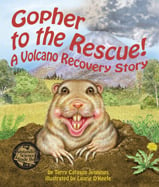Alignment to Standards for ID

| Grade | Number | Standard |
|---|---|---|
| 1 | 1.S.3.2.1 | State that living things need food to survive. |
| 1 | 1.SS.2.1.1 | Explain what maps and globes represent and how they are used. |
| 1 | 1.SS.2.1.4 | Identify continents and large bodies of water on a globe or a map. |
| 2 | 2.S.3.2.1 | Identify four basic needs of all living things food, shelter, water, space). |
| 2 | 2.S.3.2.2 | Discuss how animals are suited to live in different habitats. |
| 2 | 2.SS.2.1.3 | Show that map symbols such as key, legend, and scale represent a real object or place. |
| 3 | 3.S.3.1.1 | Describe the adaptations of plants and animals to their environment. |
| 3 | 3.S.3.2.1 | Describe the energy needed for living systems to survive. |
| 3 | 3.S.3.2.2 | Compare and contrast the energy requirements of plants and animals. |
| 3 | 3.S.3.2.4 | food web and explain how organisms both cooperate and compete in ecosystems. |
| 3 | 3.SS.2.1.3 | Locate on a map waterways, landforms, cities, states, and national boundaries using standard map symbols. |
| 4 | 4.S.3.1.1 | Analyze and communicate the adaptations of plants and animals to their environment. |
| 4 | 4.S.3.1.3 | Classify the five groups of vertebrates mammal, reptiles, amphibians, birds, and fish) based on characteristics. |
| 4 | 4.SS.2.1.2 | Show on a map of the world the continents, oceans, landforms, poles, hemispheres, equator, and prime meridia |
| 4 | 4.SS.2.3.3 | Identify the geographic features of Idaho. |
| 5 | 5.S.3.3.2 | Explain the concept that traits are passed from parents to offspring. |
| 5 | 5.S.4.1.1 | Describe the interactions among the solid earth, oceans and atmosphere erosion, climate, tectonics and continental drift |
| 5 | 5.SS.2.2.1 | Identify ways the land has been changed by people, technology, and natural forces. |
| K | K.S.3.1.1 | Observe and describe the characteristics of plants and animals. |
| K | K.SS.2.1.2 | Distinguish between land masses and water on a globe or map. |